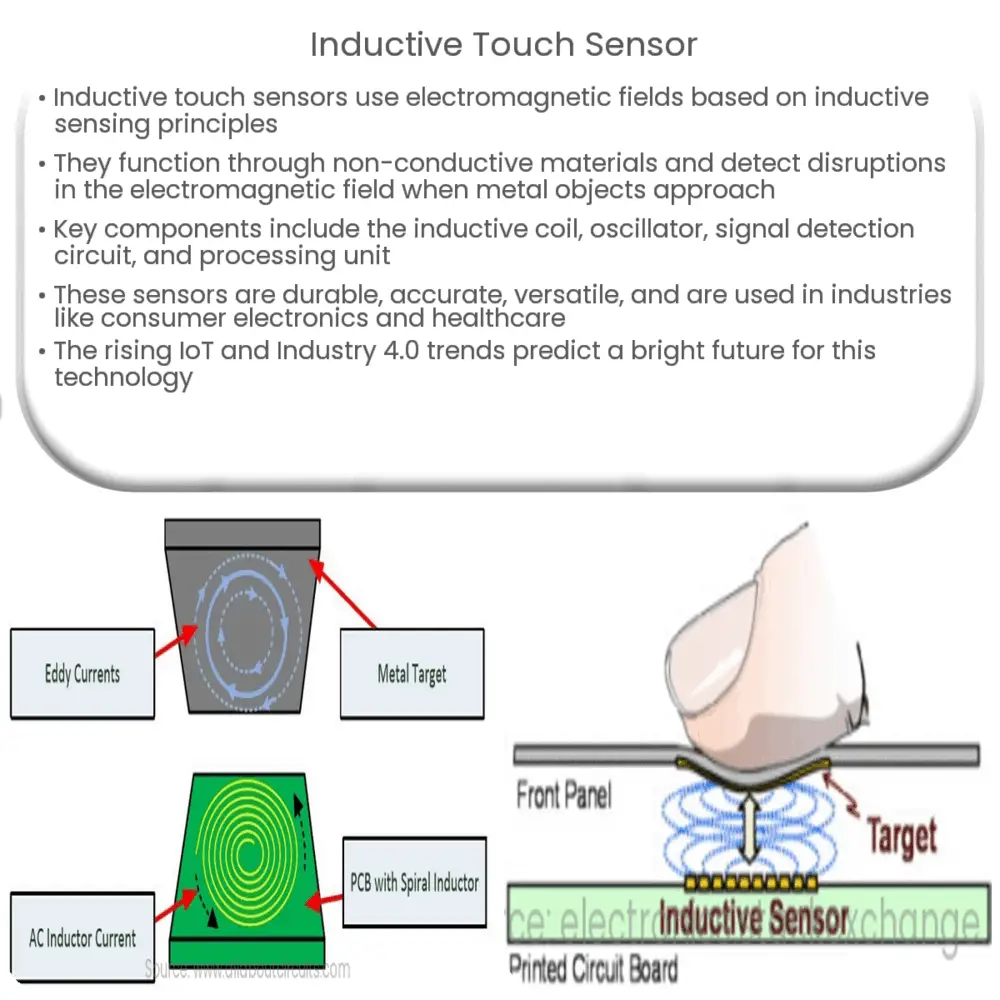Explore the world of inductive touch sensors, their working principle, benefits, applications, and future trends in our comprehensive guide.

Introduction to Inductive Touch Sensors
Inductive touch sensors represent an innovative, reliable, and increasingly popular technology that is shaping the future of human-machine interaction. This technology primarily utilizes electromagnetic fields and operates based on the principles of inductive sensing.
Understanding Inductive Sensing
Inductive sensing is a contactless, magnet-based method employed in various applications from touch interfaces to proximity detection. It operates by leveraging the properties of a changing magnetic field, induced by a metal object coming into its vicinity. Unlike other sensor technologies, inductive sensing can function effectively through any non-conductive material, enhancing its application scope.
Principle of Operation
The fundamental principle of operation for inductive touch sensors revolves around the idea of electromagnetic field disruption. To simplify, an inductive touch sensor consists of a coil that generates a magnetic field. When a metallic object, or stylus, approaches the coil, it disrupts the electromagnetic field. This disruption is then measured and processed, which leads to a triggered response, essentially recognizing the touch or proximity.
Key Components of Inductive Touch Sensors
-
Inductive Coil: This is the core component of the sensor, producing an electromagnetic field when an alternating current passes through it.
-
Oscillator: An oscillator is used to generate the alternating current that drives the inductive coil.
-
Signal Detection Circuit: This circuit measures the changes in the coil’s properties due to the proximity of the stylus, and it converts these changes into a signal that can be processed.
-
Processing Unit: The processing unit interprets the signal from the detection circuit and translates it into an actionable output, such as a touch event.
Inductive touch sensors offer several benefits, including durability, accuracy, and versatility, which makes them suitable for diverse applications. In the following section, we will delve deeper into these advantages and how they differentiate inductive touch sensor technology from other touch sensing methods.
Advantages of Inductive Touch Sensors
Inductive touch sensors come with numerous advantages that make them ideal for a wide range of applications.
-
Durability: As these sensors are not reliant on touch in the literal sense, they are not subjected to the typical wear and tear associated with other touch technologies. This ensures a long lifespan and consistent performance.
-
Accuracy: Inductive sensors provide excellent accuracy and resolution, making them ideal for high-precision applications such as digital art and signature capture.
-
Versatility: Inductive sensors can operate through any non-conductive material, including glass, plastic, or even gloves. This makes them extremely versatile and adaptable to various environments and use cases.
Applications of Inductive Touch Sensors
Inductive touch sensors are employed in a myriad of applications, underlining their adaptability and usefulness. They are extensively used in industrial automation for detecting the presence of metal objects. In the consumer electronics space, they are commonly found in digital pens for tablets and smartphones, offering a precise and intuitive interface for users. The healthcare industry also utilizes this technology in various medical devices for its reliability and accuracy.
Future Trends
The inductive touch sensor market is expected to grow significantly in the coming years. This growth is driven by the increasing adoption of this technology in various industries and the ongoing advancements in sensor technology. With the emergence of the Internet of Things (IoT) and Industry 4.0, inductive touch sensors will play an increasingly critical role in shaping the future of human-machine interaction.
Conclusion
In conclusion, inductive touch sensors offer a robust and versatile solution for various touch and proximity sensing applications. Their inherent advantages such as durability, accuracy, and the ability to operate through non-conductive materials provide them with a competitive edge over other touch sensing technologies. The growing demand in industries such as consumer electronics, healthcare, and industrial automation, coupled with technological advancements, ensures a bright future for inductive touch sensor technology. As the world becomes increasingly interconnected, these sensors will undoubtedly continue to play a significant role in facilitating seamless human-machine interactions.

